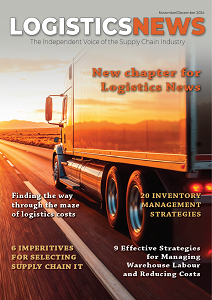The Warehouse Advantage webinar hosted in September highlighted the many opportunities that exist in the logistics real estate industry, including the future of logistics and all the dynamics at play
Moderated by Bruce Whitfield, the #WarehouseAdvantage webinar included an interesting panel discussion between Marcel Basson (Retail Executive, Pick n Pay), Mike Benfield (CEO of Macsteel), Gary Benatar (Chairman of Relog) and Steven Brown (CEO of Fortress). The webinar included discussions on why logistics real estate is so explosive right now, the opportunities that are available for the sector, the role warehousing plays, the longevity and state-of-the-art innovation required and how building surrounding infrastructure is so important for the economy.
In summary, the panel discussed:
The progress of the new Pick n Pay super distribution centre (DC) currently under construction at Eastport Logistics Park: This 164,000m² single roof super-distribution centre would not be possible if it weren’t for the partnerships that have been established between all the participants. The panel discussed the scale of the project as well as the technological and sustainability aspects of the design and construction process, and how the move from the current Longmeadow facility is expected to take place.
The role of rail: The panellists agreed that a return to rail is the best way forward for the industry. Trucks as the main transporter of goods are inefficient and expensive. They also agreed that many efficiencies could be created throughout the entire supply chain system if rail were more widely utilised. Brown said: “Transnet needs to engage more proactively with the private sector to unlock the opportunities. We cannot do it on our own and we need the government to be more flexible within the PFMA structure.” Basson agreed: “Transport as part of our supply chain is by far our biggest expense. With fuel costs escalating, it needs to make economic sense that your travel distances are something that you can control because that adds cost to the product.”
Benatar added: “The only way to make rail work in this country is to integrate the whole model and transfer of products because rail works on bulk, on inbound, on containers, on export – it doesn’t work on the last mile, so you need a last mile system that integrates with rail.” South Africa has its major economic hub the furthest away from any navigable water in the world. “Most of our clothing retailers have their DCs near the coast because they’re bringing in containers of clothes and it’s very expensive to get containers to Johannesburg. So, they store the containers in Durban and then everything is transported to other areas by road, which could be on rail, but we don’t have the infrastructure and we don’t have anyone driving that process,” continued Benatar.
E-commerce and dark stores: Due to the massive growth of e-commerce, the logistics industry has had to adapt to cater for the requirements of dark stores. A dark store is a DC/warehouse that retailers can create for an online and omnichannel solution. There is a threshold where the demand for this sector and channel will mean that retailers must look at dedicated facilities to be able to service that channel, otherwise stores get too congested. The main DCs are too large for this process and bring too much complexity into the process.
A major issue with online sales is availability, which a dark store can solve. Basson says: “A dark store doesn’t need the same amount of people working in the facility as a standard warehouse and DC, and a lot of retailers go high-tech in these environments. This speeds up the process, enabling us to get orders to clients in a short amount of time.”
The e-commerce model is demanding in that customers want the products now and expect retailers to be efficient in this space. Retailers must be able to respond quickly and deliver accurately in a very short time frame. The only way this can be done is through the accurate availability of products.
Benatar said: “What we’re seeing overseas is a development of a hybrid, so the retail store will have a multifunctional, micro-fulfilment centre behind it, which is dedicated only to picking the online orders. Together with the retail store in the front, which is customer-centric, you have an online store at the back of the store using the space and picking orders for delivery. We’re going to start to see that happening in South Africa quite soon.”
Plan more effectively for the future: Industry players must look to international examples and monitor trends more closely to remain competitive. Benatar believes that the industry should have a strategic master plan for logistics for the next 20 to 50 years. He cited examples of projects that he has been involved in that were planned many years in advance: “I did work in Switzerland in 2016 and was told that I needed to make sure that the warehouse is compatible with an underground transport system that will move products into cities on magnetic levitation rails so that the last mile can be done with automatic electric vehicles and that system would be going live in 2030.”
Brown elaborated: “Part of our job is identifying those locations and where the highway network is going to be built and where we think the future nodes will be. If one looks at the amount of warehousing logistics rights that are in the spatial development framework in Ekurhuleni, it’s probably multiples of anything that a country our size could ever use. Everybody says there’s so much flat land to build warehouses on, but you need to have the land serviced and you need to have it zoned correctly.”
Brown concluded: The growth driver of logistics and e-commerce will continue for the foreseeable future. We as Fortress Real Estate are fortunate to be in the driving seat to power its growth.” •

.jpg)


